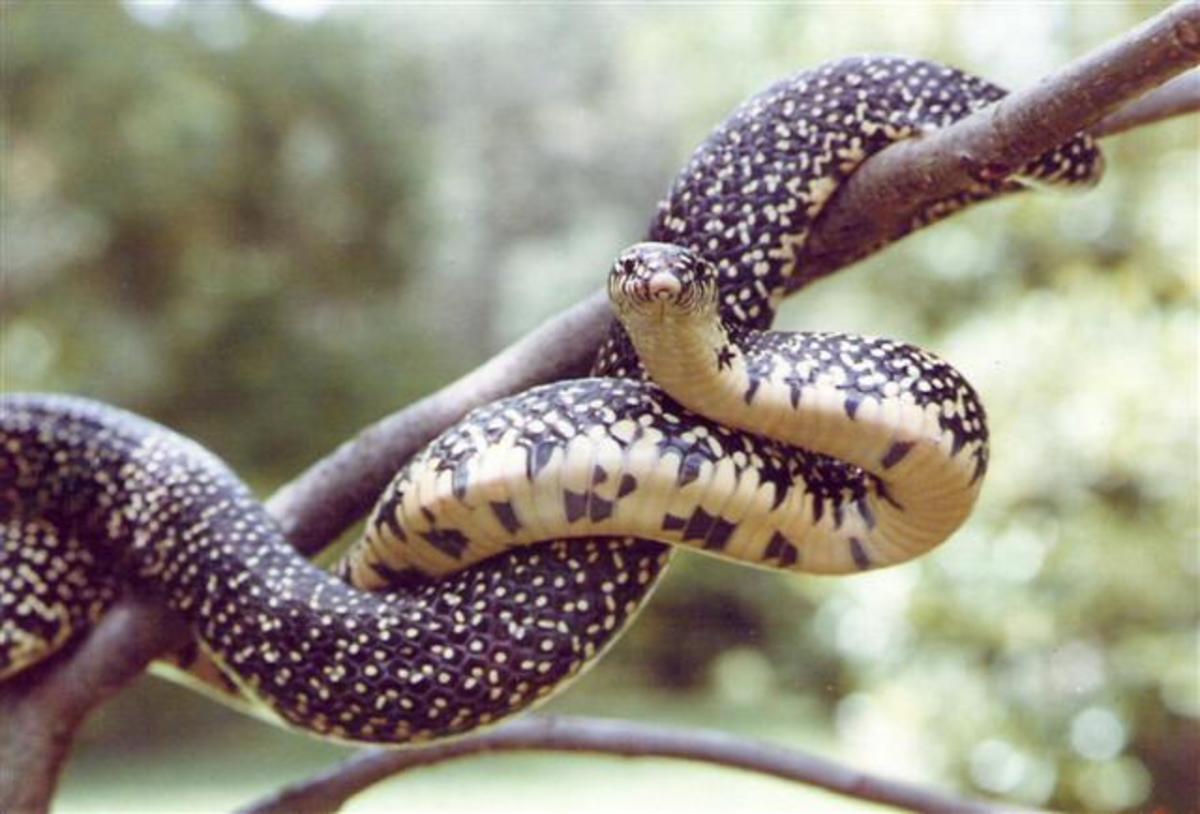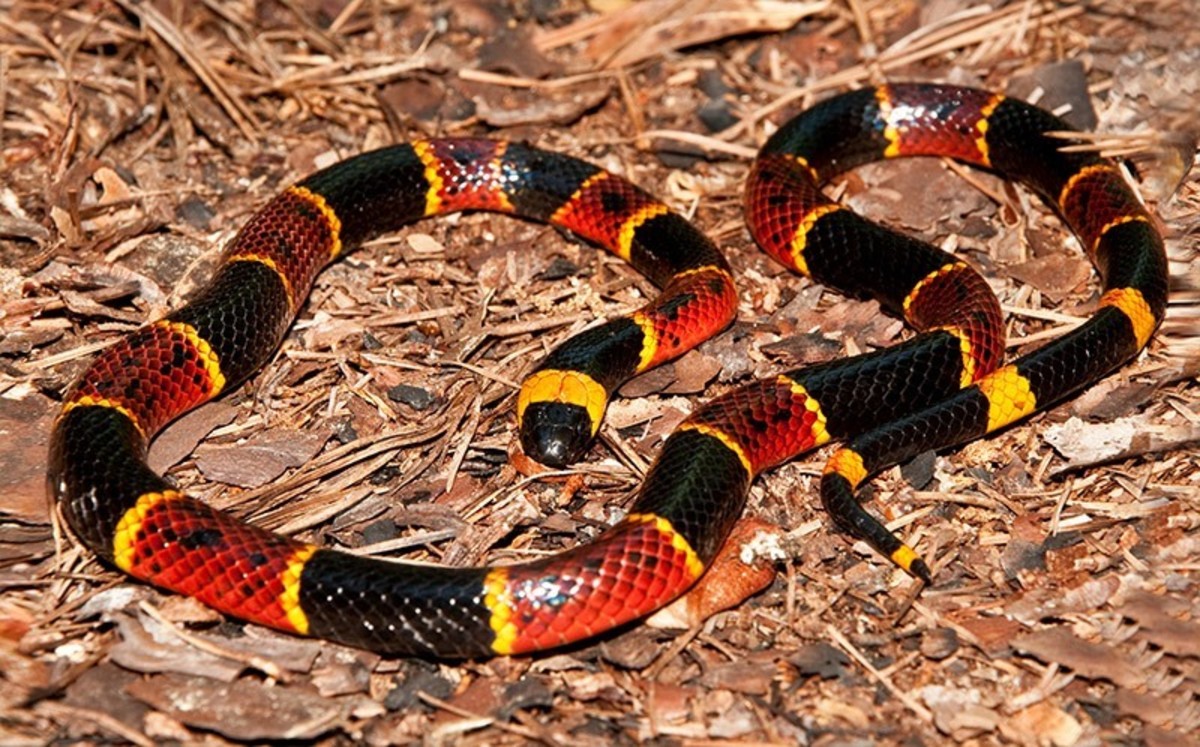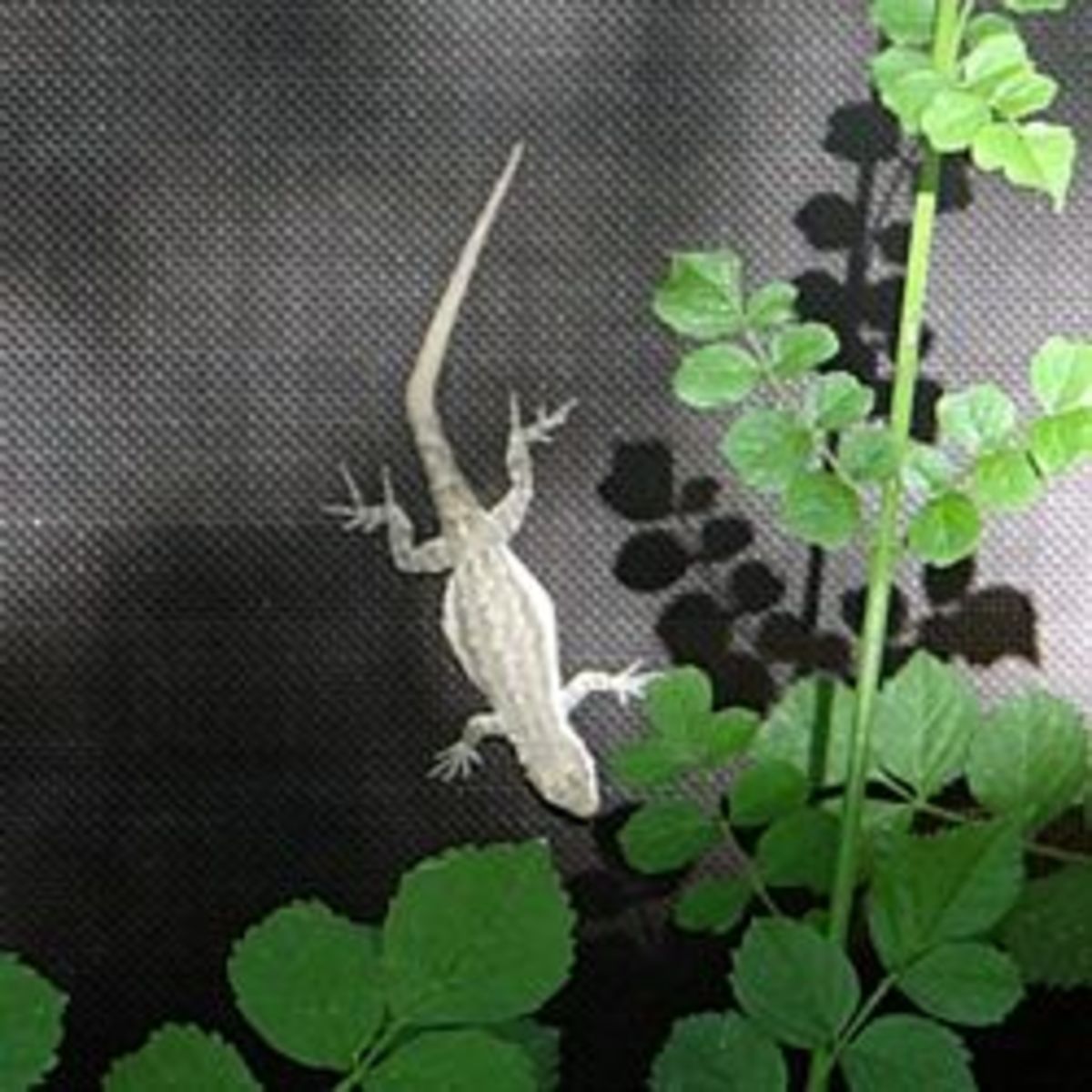A Guide To The Reptiles Of Britain
The Common Adder
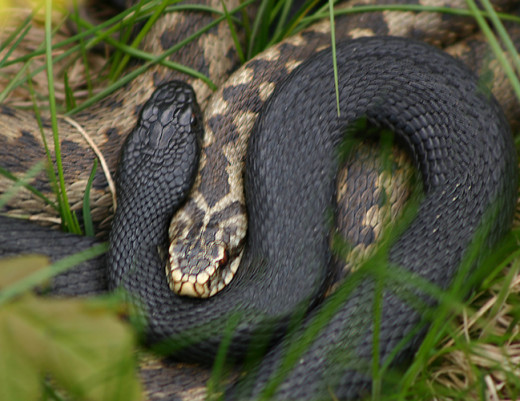
On The Hunt
Common Adder
According to an old legend, a female adder swallows her young when danger threatens. What actually happens is that young snakes hide under their mother's belly. The common adder, or viper, is Britain's most widely distributed snake the only one that is venomous. But it is very timid and normally flees from humans before anyone gets close enough to provoke it into biting. The bite is rarely fatal but needs hospital treatment as soon as possible.
Adders like open places such as heaths, moors and scrub-covered hillsides, and are sometimes found among sand dunes. They shed their skins from time to time, and cast skins may be a sign of their presence. On farmland they are the farmer's friend, eating small mammals such as mice and voles. They also eat lizards, frogs and toads if nothing else is available, but do not eat every day; a large meal may last a week or more. Male adders emerge from hibernation in February or March, females a little later, and courtship reaches its peak in April. Females usually become pregnant only once every two years. The young are born fully formed in August or September and take two or three years to reach maturity. Adders have few enemies apart from man, and may live for up to nine or ten years.
The Smooth Snake

Smooth Snake
Lowland heaths of the type found in Surrey, Hampshire and Dorset are the home of the smooth snake, one of Britain's rarest animals. Because of its rarity, it is now protected by law, and whether or not it can continue to exist in Britain depends on how much heathland can be preserved. Lowland heaths are under increasing pressure from farmers and foresters, as well as from walkers and picnickers and the ravages of heath fires.
Because the smooth snake is very shy as well as rare, there is still much to be learned about its way of life. It rarely basks in the open, preferring to get the sun's warmth indirectly by lying under a flat stone or similar objects. In spring, when they emerge from winter hibernation, smooth snakes are sometimes seen basking intertwined among heather. Like many other reptiles, individuals have a particular home range and stay in the same area for a long time. Much of their time is spent burrowing underground, and they mostly eat other reptiles such as lizards. They are also cannibals, at least in captivity.
Mating takes place in May. The young are born in August or September and are self sufficient from birth. Smooth snakes may survive in the wild for up to twenty years.
The Grass Snake
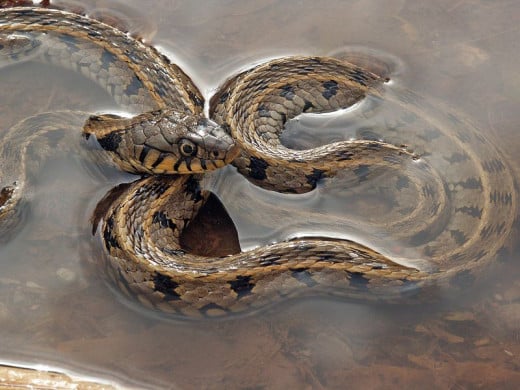
Grass Snake
Damp grass, ditches, pond banks and slow moving streams are likely places to see the grass snake, the largest snake in the British Isles. Amphibians such as frogs are its main food, caught on land or in the water. It often feeds in the early morning, and a large meal will satisfy it for a week or ten days. Grass snakes are completely harmless to humans. Like other reptiles, they spend a lot of time basking in the spring sun after emerging from hibernation in April. Courting and mating follow soon after.
The grass snake is the only British snake to lay its eggs in a place where heat is generated, such as a compost heap. A female will travel more than a mile to find a suitable site, and many may be attracted to the same one. Hundreds of eggs may be laid in one mature heap in June or July, giving rise to tales of snake plagues when the young hatch in August or September. Eggs laid in hot places hatch some weeks earlier than those laid in cooler places, and the young have the benefit of the summer sun while growing, giving them plenty of energy to hunt and fatten up for winter. Hibernation begins in October, in wall crevices, under tree roots or in similar places. Snakes not taken by birds, hedgehogs or badgers may live about nine years.
The Common Lizard
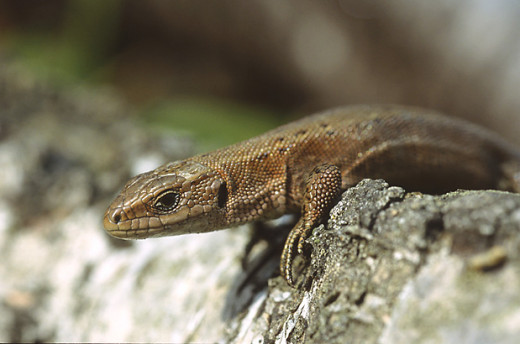
Common Lizard
Rustles in the undergrowth may be the first signs of a common lizard's presence as it scampers up a bank to hide. It is very nimble and disappears rapidly when disturbed. Lizards live in heathland, sand-dunes, grass or scrub-covered banks and on high moors, and where conditions are ideal, large colonies may be found. They emerge from hibernation early in spring, and at first bask in the sun a good deal, but as the weather gets warmer they need to bask less. They court and mate in April and the young are born in midsummer. In the cool of September and October, lizards need to bask more often. Before autumn ends they retire into cracks and under stones to hibernate.
Common lizards eat a variety of small creatures, spiders particularly, which they hunt throughout warm days. At night and on cool days they remain hidden. Lizards themselves fall prey to many animals, including smooth snakes, adders, rats and birds- particularly kestrels. If a predator seizes a lizard's tail, it can shed it and so escape; the tail may even be shed if the lizard is merely threatened, to divert attention while it scuttles to safety. A new tail slowly grows from the stump, but is never as long or as perfect as the original.
The Sand Lizard
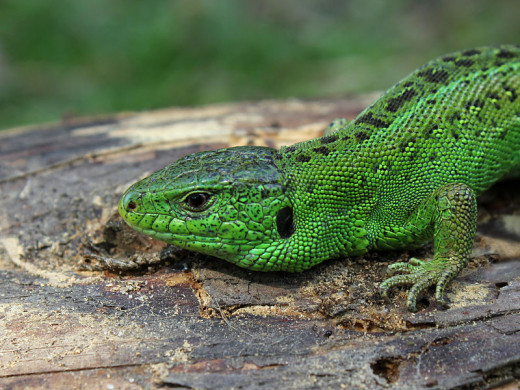
Sand Lizard
Dry, open country is the home of the sand lizard, chiefly the sandy heaths of Surrey, Hampshire and Dorset, although a small population lives on the coastal dunes near Liverpool. As the heaths give way to farming and forestry and the sand dunes become less secluded, sand lizards have become scarce and are declining still. Since 1975 they have been protected by law.
The sand lizard emerges from its hibernating burrow, dug deep in the sand, in March or April, and spends some time basking and shedding its old skin. Males normally emerge first, their dull winter colours soon being replaced by emerald green flanks. In April and May the males fight fiercely for dominance, the victors pairing up with females. Adult lizards feed well during summer to build up fat reserves for the coming winter. Large insects such as beetles and grasshoppers are the main food, and they are often dismembered before being eaten. Sand lizards may start hibernating as early as the end of August. Young lizards are hatched in late August or September and grow rapidly before they hibernate in October. Sand lizards need at least two years to reach maturity. They may live to be seven or eight if they escape the snakes, rats and birds that prey on them.
The Slow Worm
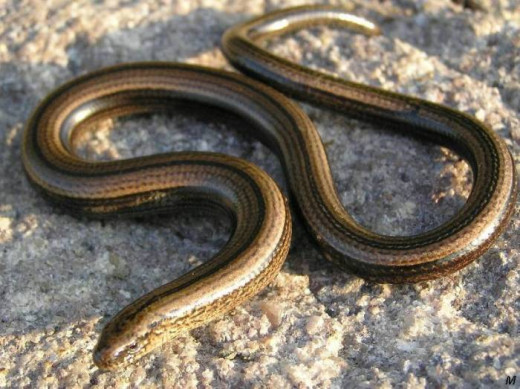
Slow Worms Up Close
Slow Worm
At one time any creeping, serpent like animal was called a worm, which is how the slow worm or blind worm got its name. It is in fact a legless lizard but is often mistaken for a snake and consequently killed, although it is harmless. As slug eaters, slow worms are an asset to any garden. They usually move slowly and deliberately, but can move fast if disturbed.
Slow worms live on sunny banks and hillsides where there is good cover such as grass, scrub or stones. Their shed skins, left in fragments, may be found occasionally. Hibernation underground begins in October and ends in March, when slow worms emerge to bask in the early spring sun. Mating takes place in April and May. Males often fight at this time, seizing each other on or near the head and sometimes inflicting serious bites. From six to twelve young are born in August or September or, more rarely, in the following spring.
Young slow worms have many predators, including frogs and toads. They take about three years to mature. Slow worms can live longer than any other lizards, and one in captivity lived well into its fifties. Such an age however, is unlikely in the wild, where enemies include hedgehogs.
© 2014 James Kenny

